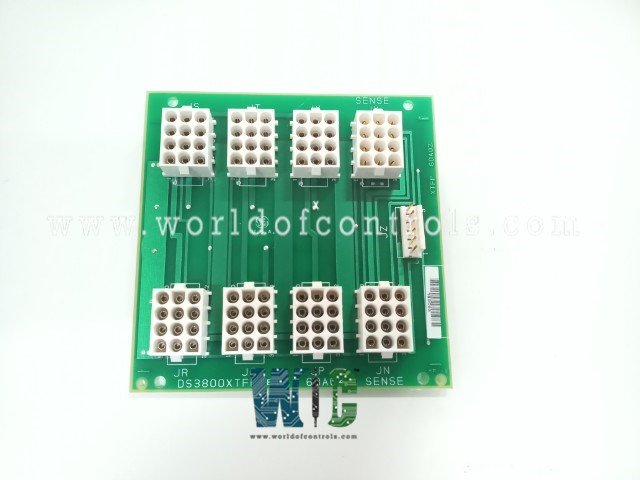
World Of Controls understands the criticality of your requirement and works towards reducing the lead time as much as possible.
DS3800XTFS1A1A - Generator Regulator Control Terminal Board is available in stock which ships the same day.
DS3800XTFS1A1A - Generator Regulator Control Terminal Board comes in UNUSED as well as REBUILT condition.
To avail our best deals for DS3800XTFS1A1A - Generator Regulator Control Terminal Board, contact us and we will get back to you within 24 hours.
SPECIFICATIONS:
Part Number: DS3800XTFS1A1A
Manufacturer: General Electric
Series: Mark IV
Product Type: Generator Regulator Control Terminal Board
Power Requirements: +5 V dc, 7 A
Input Voltage: 90-264 V
Output Voltage: 0-10 V DC
Frequency: 50/60 Hz
Power supply voltage: 24 V dc
Current Rating (Exciter Control): 10 A to 30 A
Operating Temperature: -10°C to +60°C
Isolation Voltage: 1500 V AC
Size: 15.7 cm high x 17.5 cm
Power Consumption: 20W
Weight: 0.8kg
Repair: 3-7 Day
Availability: In Stock
Country of Origin: United States
FUNCTIONAL DESCRIPTION:
DS3800XTFS1A1A is a Generator Regulator Control Terminal Board manufactured and designed by General Electric as part of the Mark IV Series used in GE Speedtronic Gas Turbine Control Systems. A Generator Regulator Control Terminal Board is a critical component in gas turbine control systems, responsible for managing the generator’s excitation and voltage regulation. It acts as the interface between the Automatic Voltage Regulator (AVR), the exciter, and the generator, ensuring that voltage levels remain stable under varying load conditions. Gas turbines experience rapid fluctuations in power demand, requiring precise control over excitation to maintain grid stability and generator efficiency. The terminal board facilitates this by providing structured connections for voltage sensing, control signals, and protective relays.
The excitation system supplies controlled DC power to the generator’s rotor windings, influencing the generated voltage and reactive power. The Generator Regulator Control Terminal Board plays a central role by receiving voltage feedback from the generator, processing it through the AVR, and adjusting the excitation as needed. This process ensures that the generator maintains a constant output voltage, preventing fluctuations that could lead to operational instability or equipment damage. The terminal board is also designed with built-in protection features such as overvoltage, undervoltage, and loss-of-excitation detection, which safeguard the generator against faults and abnormal conditions.
FUNCTIONS OF REGULATOR CONTROL TERMINAL BOARD:
WOC has the largest stock of GE Speedtronic Gas Turbine Control System Replacement Parts. We can also repair your faulty boards. We can also supply unused and rebuilt backed-up with a warranty. Our team of experts is available round the clock to support your OEM needs. Our team of experts at WOC is happy to assist you with any of your automation requirements. For pricing and availability on any parts and repairs, kindly get in touch with our team by phone or email.
What is a Generator Regulator Control Terminal Board?
A Generator Regulator Control Terminal Board is a critical component in power generation systems that serves as the interface between the generator's voltage regulator and other control systems. It facilitates the monitoring and regulation of voltage output, ensuring the generator operates within safe and efficient parameters.
What are the key functions of the Control Terminal Board?
The Control Terminal Board performs several essential functions, including voltage regulation, signal processing, and system protection. It receives input from voltage and current sensors, processes this data, and sends control signals to the voltage regulator to adjust the generator's output.
How does the Control Terminal Board ensure voltage stability?
The Control Terminal Board ensures voltage stability by continuously monitoring the generator's output and comparing it to the desired setpoint. If any deviation is detected, the board sends corrective signals to the voltage regulator, which adjusts the excitation current to the generator's rotor.